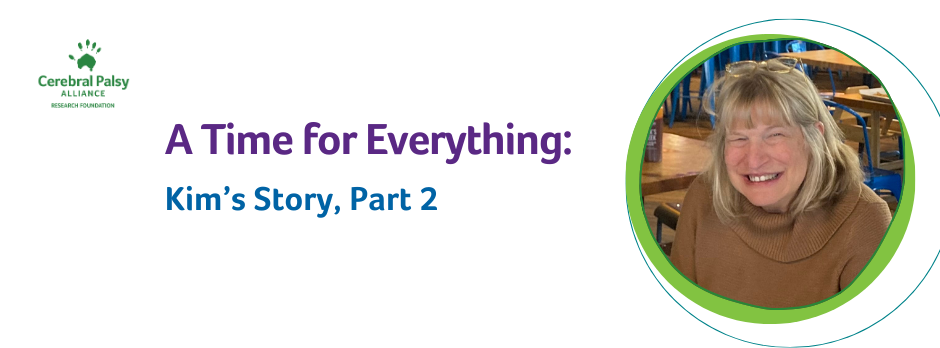
By Kim Greene
Season of Confirmation
With his affirmative comment and now wondering if indeed I had a neurological issue, I googled what I knew about my history.
I knew that I had been adopted and born eight weeks early and had to be kept in the hospital until I was stable and weighed more than the four pounds I was at birth.
I also knew that I lacked coordination with both large motor and fine motor skills, had tight muscles, balance issues, difficulty climbing and ascending stairs unless I had a railing, wore a patch over my eyes as a child, had trouble swallowing, and had a club foot at birth.
I’m sure you have surmised that when I put this all into google, the diagnosis was cerebral palsy.
I was 62 years old and finally had an explanation that I knew in my heart was correct. And it made so much sense to me.
A referral to a physical medicine doctor confirmed my diagnosis of mild diplegic spastic cerebral palsy. It was further confirmed by a doctor at the Adult Cerebral Palsy Clinic at Nationwide Children’s Hospital. An MRI showed evidence that I have periventricular leukomalacia (PVL), a type of brain injury most common in very premature babies. PVL leads to problems with motor movements and can increase the risk of cerebral palsy.
Season of Looking Back
Growing up, I believe that I learned quickly how to hide and cover up my struggles with movement, motor skills, balance, and physical activity. I avoided anything that was difficult the best that I could. I also overcompensated by being friendly and helpful to all around me.
Gym, art, and music were all a nightmare. I struggled with every sport and hated all things related to physical activity. I was laughed at and teased for how I ran, how I used scissors, was uncoordinated, had no rhythmic ability, had messy handwriting, and the list goes on.
When asked to participate in anything sports related during a family gathering or extracurricular events, I always declined…even though I so wished that I could belong. I became good at pretending I wasn’t interested. Instead, I became the helper. I would help the teacher with tasks, work with younger students, volunteer to work in the office; anything to get out of what I perceived I couldn’t do.
When I reflect on my life before the diagnosis of having cerebral palsy, I often wonder how knowing this may have changed my experience with childbirth. I am blessed that I have given birth to two children. Our first child was born after 24 hours of labor that would not progress and resulted in an emergency C-section. Our second child was born with a scheduled C-section. I personally wonder if the undiagnosed CP (at the time) played a part in needing a C-section because I cannot coordinate my muscles. The pushing and the breathing exercises never made sense to me, and I couldn’t do them.
Fri 05 Dec 2025
An update on one of our most important initiatives: expanding access to life-changing assistive technology for Native Americans with disabilities.
Mon 08 Sep 2025
We’re proud to share that CPARF’s 2025 Remarkable US Accelerator cohort kicks off this week! This program supports disability-focused startups that are developing cutting-edge assistive technology.



